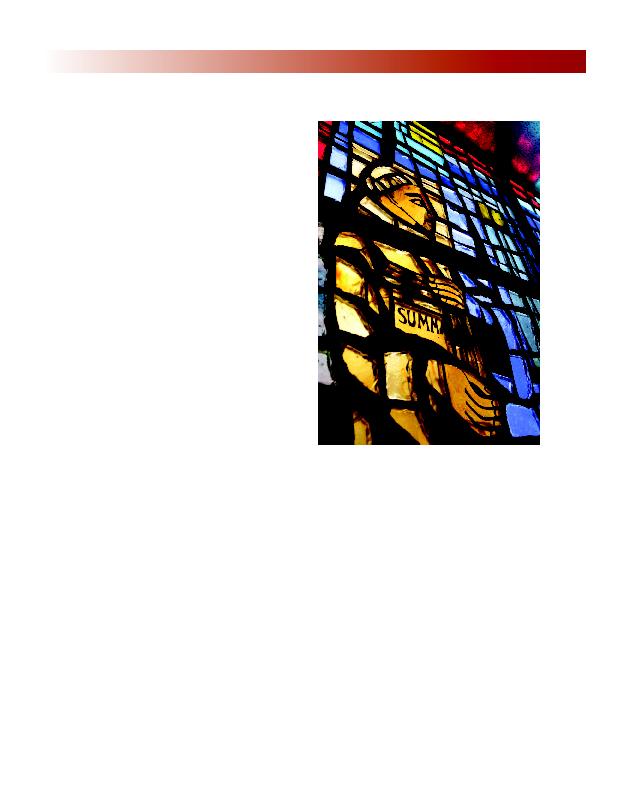
2
diocesan priest and, at an early age, was appointed re-
gent minister at the University of Paris. He was an im-
established a house near the university before 1220.
later be occupied by his student Bonaventure, regent master
12541257, and a long line of other Franciscan theologians.
distinctive Franciscan intellectual (theological-philosophical)
tradition and, thus, holds an important place of honor in
both theological and Franciscan circles.
note two things.
tinues to be an important, alternative and, in some ways, dis-
tinctive way to think about fundamental theological
questions such as Who is Christ? Is there a connection be-
tween Christ and creation? What does it mean to be
human?
carried out in the monastic scriptorium.
the retrieval and study of early Franciscan tradition (CFIT).
One of the strategies has been to create and develop a web-
site
line, the writings of Francis and Clare. The site offers the pos-
sibility of viewing simultaneously the English and the Latin
text, the possibility of comparing different texts in adjacent
columns, and/or to explore the reference to Sacred Scripture
embedded in the text with a click of the mouse. This modest
beginning is a prototype of what is envisioned as the first of
many sources from within the Franciscan tradition to which
students, scholars, and interested others will increasingly
have access through the Internet in any country, at any time.
sources (e.g., The Custodians Series), or to track the
availability of new books or projects that seek to explore and
make more accessible the resources of the Franciscan intel-
lectualspiritual tradition.
movement inspired by Francis of Assisi. Francis himself, in a
letter to Anthony of Padua, largely settled the question. In
dow in Doyle Hall. The window is located in the corri-
dor near the Department of History faculty offices.
long as you do not extinguish the spirit of prayer and de-
votion."
ied online through a simple search. Francis would con-
tinue to be concerned, of course, that the online
searchable study of a broad range of texts would become
an end in itself. Rather, Francis would hope that study
nourish and encourage the human spirit to "give praise
and thanks to God" as well as strengthen a person's re-
solve to "serve with great humility." (Canticle of the Crea-
tures can be viewed at
gust, he will begin an interim appointment as president of
Siena College.)